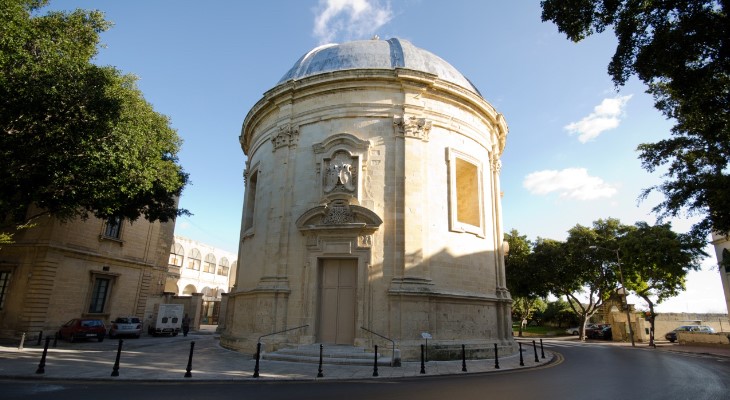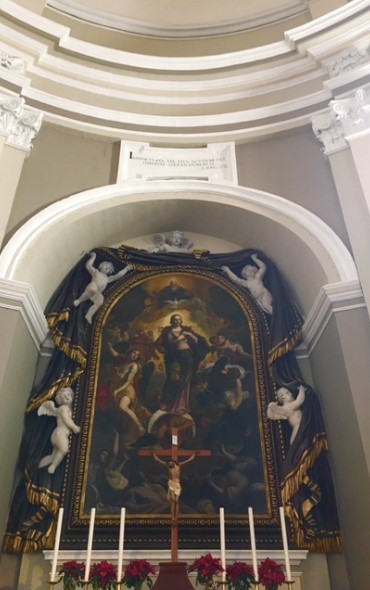A real treat for art lovers: seven paintings by Mattia Preti under one roof designed by il Calabrese himself.
Sarria Church is unique in many ways. Of all the landmarks and historic attractions on the Maltese Islands, this is the one that probably most deserves the accolade of “little gem”.
Officially called the Church of the Immaculate Conception, its 500-year old nickname derives from the Knight Fra Martin Sarria Navarra, who had paid for the original chapel which stood on this site back in 1585.
The current rotunda was ordered to be built by Grand Master Nicolas Cottoner as a sign of thanksgiving, following the devastating plague of 1675. Italian artist Mattia Preti was commissioned to design the church, and it was built under the direction of architect Lorenzo Gafà.

©viewingmalta.com - (Mario Galea)
A Preti jewel
While Mattia Preti is renowned for his extensive output of Baroque paintings, Sarria was the only church he ever designed. Born in 1613 in Calabria, southern Italy, he became a Knight of Grace of the Order of St John in 1660, a year after visiting the Order’s headquarters in Malta. He remained in Malta until his death in 1699. Among his numerous commissions, he was responsible for transforming the interior of St John’s Co-Cathedral.
But Sarria Church remains a special Preti masterpiece. Push open the heavy front door and step inside the rotunda. The noise of the traffic outside dies down as you look up and around the seven paintings by the master dominated by the central image of the Immaculate Conception.
On the small side compared to most churches on the island, Sarria’s pleasant internal volume displays a restrained baroque design, nothing too flamboyant, rather sombre in fact, until your eyes fall on the main drama above the altar: the titular centrepiece of the Immaculate Conception, surrounded by cherubs holding up a lofty, black curtain to reveal the painting. Now this, is full theatrical baroque.

Adriana Bishop
The painting captures the victory over the plague, of good over evil. On either side of the Virgin Mary, angels are seen putting their sword away into their scabbards to indicate that the plague is over. Malta had lost a third of its population to the Black Death, which was considered a punishment from Heaven. The Virgin Mary, as the intercessor, stands surrounded by angels over a background of boats ferrying the sick from Lazaretto to Valletta. Above her, God and the Divine Spirit (the white dove) look down at the triumph of good over evil.
The surrounding paintings depict saints all considered to be intercessors of the plague: St Roque, St Sebastian, St Rosalia, and St Nicholas in reference to the Grand Master. Look out for the cotton plant depicted on the pilasters referring to Grand Master Cottoner’s coat of arms.
The two lunettes depict the fall of Lucifer with Archangel Michael driving him into hell, and an allegory of the Order of St John kneeling at the feet of its patron, St John the Baptist.
Restoration on the church interior has only just been completed, but funds are still required for a new lighting system. While you are free to take photos inside the church, do pick up a print of the titular painting for a small donation, which will help keep this jewel shining bright.